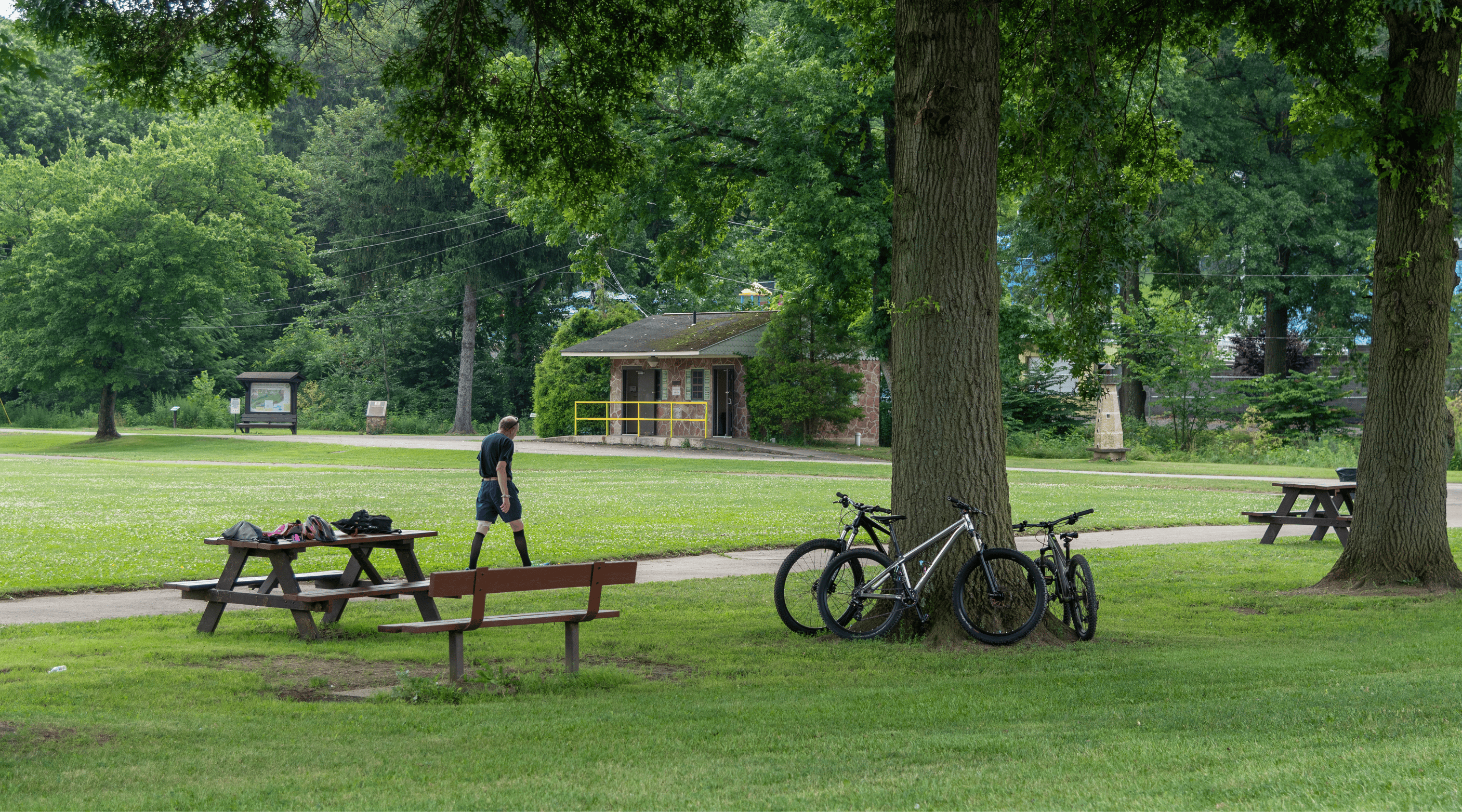
Greensburg leaders want to make the streets safer for bikers and walkers.
“I live in town, I work in town — just over the past year, I would say there has been a tremendous uptick in e-bikers,” said Alec Italiano, the city’s planning director.
By the end of this month, the city plans to apply for another $20,000 grant from the Pennsylvania Department of Community and Economic Development — the same agency that provided a $20,000 grant to fund the Active Transportation Plan last year. In 2022, the city completed a plan to better connect city assets such as parks, schools, neighborhoods, and trails.
The popularity of electric bikes has surged since 2020, said Samuel Echard, owner of the Greensburg Bike Shop.
“The uptick started with COVID. I literally sell 40 to 50 e-bikes for every one regular bike now,” Echard said.
Rather than creating standard bike lanes, Greensburg’s plan focuses on building a dedicated bicycle network that avoids busy thoroughfares and keeps riders safe. These routes would feature roadway markings, signage, and intentionally bypass streets like Main Street and Tunnel Boulevard, where traffic and truck volume are high. The network would primarily run along roads with speed limits of 25 mph or lower.
These proposed routes won’t include traditional bike lanes. About a decade ago, the city proposed a plan to add dedicated bike lanes on roads, but it faced resistance from the community. City officials are now pursuing a different approach.
“I think it’s a nice compromise. We don’t want to take up dedicated traffic lanes, but we want to make it safer,” Italiano said.
The transportation plan outlines 34 projects across Greensburg: 15 short-term (one to two years), two mid-term (three to five years), and 17 long-term (more than five years). Five projects are designated as priorities.
One of those top-priority projects aims to improve pedestrian safety at the intersections of Tunnel Avenue and North Maple Street, as well as Tunnel Avenue and North Main Street. Planned upgrades include high-visibility painted crosswalks, curb bump-outs, and rectangular flashing beacons.
Another priority targets College Avenue. The goal is to enhance the bike facilities by increasing separation between vehicle lanes and the shoulder through right-of-way relocation and lane narrowing.
“If the City of Greensburg wants to grow, it needs to be better connected. It has to be easier to bike and walk around,” Italiano said. “It’s cheaper, it’s greener, and it doesn’t take up a parking spot.”
All 34 proposed projects aim to create or rehabilitate certain trails, bike paths, sidewalks, and other pedestrian-friendly infrastructure. In total, 24 intersections across Greensburg’s eight wards would see upgrades, including high-visibility crosswalks, pedestrian signals equipped with countdown timers, and audio cues for accessibility.
“I usually run on the Five Star Trail — I hop on right at Lynch Field,” said Nolan Labuda, 23, of Greensburg.
A longtime staple, the Five Star Trail has served Greensburg since 1968. Beginning at Lynch Field and extending to Armbrust, Ohio, the trail remains one of the area’s most popular destinations for both cyclists and pedestrians.
Residents have also expressed concerns about homelessness on the trails. As a result, the transportation plan outlines several strategies to address the issue including installing surveillance cameras, lighting, and an increased law enforcement presence.
Residents can expect to see some changes within the next year.